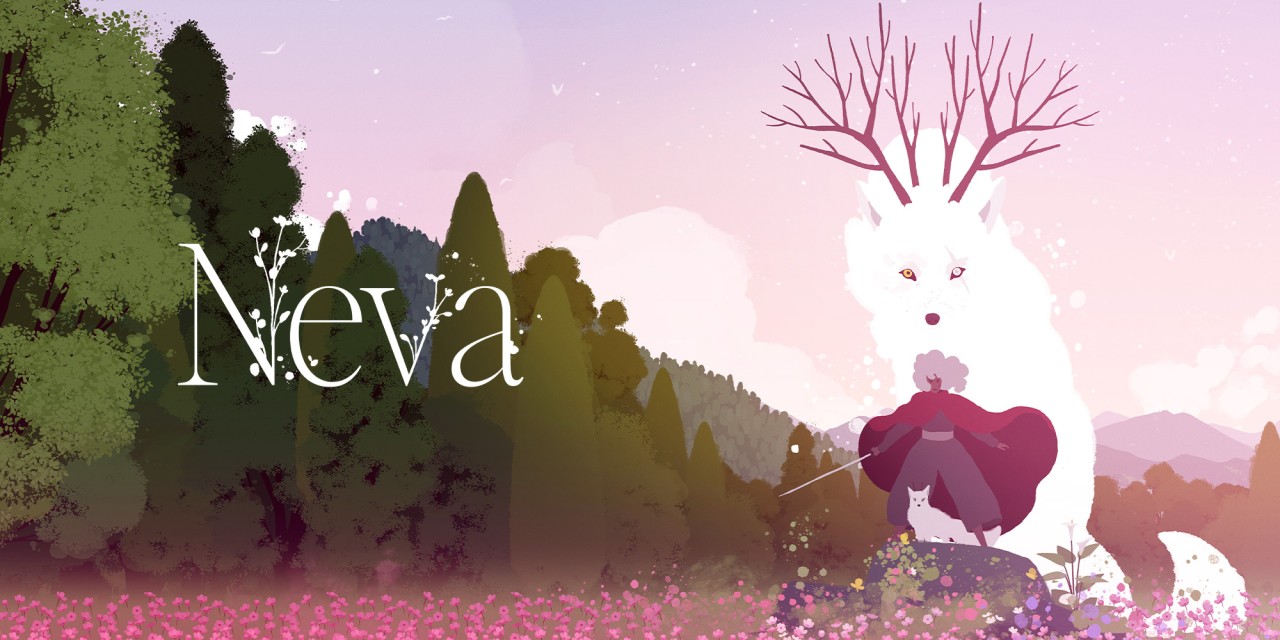This October of this year, 2024, is particularly packed. Not a week goes by without a AAA title or big game release hitting the shelves, and it has been like this since late August. It’s difficult to complain when you are a gamer. However, amidst all these blockbusters making noise and occupying all media space, there are smaller titles that deserve just as much attention and can climb to the top of the best games of the year. Among them is Nova, the second game from the Spanish studio Nomada, which gained recognition six years ago with the excellent GRIS (pronounced Grisse). We were already captivated by GRIS’ proposal in 2018; we’ve just received another shock with Neva.
In Neva, we portray a young woman with thick hair who wears a long red cape and never parts with her katana; she is named Alba. Neva refers to the name of the helpless lamb she rescues after its mother is killed by malevolent shadows, akin to Kaonashi from Spirited Away but more terrifying. These shadows are aggressive and capable of inhabiting dead animal bodies as puppets, making them formidable opponents. Alba and Neva must combine their strengths, skills, and friendship to save this dying world. While Gris focused on the player’s solitude in a cold, almost clinical world, Neva takes the opposite approach, emphasizing warmth, both human and animal. This is particularly evident in the bond between Alba, the human, and Neva, the growing wolf throughout the game and seasons. The adventure unfolds seasonally, starting in summer and concluding in spring, with changes in nature’s color, temperature, and evocative visuals. The artistic direction is sublime, with each screen a true masterpiece where Conrad Roset’s style shines. It is difficult not to be moved by Neva’s grace and elegance, especially as the game constantly delivers moments of awe-inspiring beauty.
What also impresses in Neva (and was already evident in Gris) is the technique of changing viewpoints seamlessly without cuts. There are no static close-ups; instead, regular scale changes are achieved through fluid forward and backward zooms. Depending on the moments chosen by the developers, Alba can be clearly visible with all her details for players to admire, or conversely, barely visible, allowing the grandeur of the scenery to take center stage. This intelligent manipulation of scale is not merely an aesthetic choice but also serves to emphasize certain scenes (such as a wolf on top of a tower gradually revealed) and prompts reflection on humanity’s relationship with nature. Additionally, there is a deliberate intent behind what the developers choose to show players, helping them understand their progression throughout the game. Nothing is left to chance, ensuring that the pleasure experienced is both consistent and unique.
Like Gris, Neva employs the same hand-animated process to evoke the best moments of cinematic platformers from the 1990s such as Prince of Persia, Flashback, and Another World. Neva also introduces a second game that highlights the Spanish studio’s ambitions in terms of gameplay. While Gris was strictly a platformer focusing on movement and jumping mechanics, Neva incorporates a combat dimension to complement moments of pure platforming. Alba wields a katana, and it would be a disappointment not to utilize it given such beautiful animations. Our young protagonist can slice through anything that moves, as her move set is quite varied. Alba can dodge attacks by rolling on the ground or dashing in the air, gaining distance during jumps. She can perform double jumps, sometimes clinging to certain platforms adorned with flowers, and even call upon Neva’s abilities. Neva can be sent to attack enemies, immobilizing them or causing flimsy structures to explode metaphorically.
As the game progresses, new skills become available, and the game gradually reveals its mechanics and structures. Similar to Gris, there is a constant evolution in gameplay, which includes the development of Neva, a wolf that grows alongside Alba through the changing seasons. Initially, Neva is small and requires protection from Alba; however, by the end of the journey, Neva has grown into a formidable protector for her. Additionally, Neva also serves as an efficient mode of transportation and assists in combat situations. Like Gris, Neva presents numerous puzzles throughout the game that provide challenges without becoming overwhelming; these puzzles require thoughtful engagement and highlight the developers’ creativity. The segments involving reflections and mirrors were particularly impressive to me. Throughout the gameplay, one never feels frustrated but rather continuously engaged and stimulated. While players may encounter occasional obstacles, they are usually brief, as combat remains accessible and manageable.
Gris has often been criticized for being too short, and it is accurate to say that one could finish the game within three hours. The duration of play has been extended somewhat in Neva, although it remains categorized as a brief gaming experience. Personally, I completed Neva in six hours, but these were thoroughly enjoyable hours. Nomada Studio acknowledges this aspect, which is why the game is priced under 20€. Additionally, the game’s charm encourages players to replay it, particularly those striving for 100% completion to uncover hidden flowers. In summary, it is clear that Neva firmly establishes itself as one of the standout games of the year, offering a distinctive proposition even within the indie gaming sector. It distinguishes itself and offers further evidence that video games are indeed a contemporary form of art.
Have any thoughts?
Share your reaction or leave a quick response — we’d love to hear what you think!
